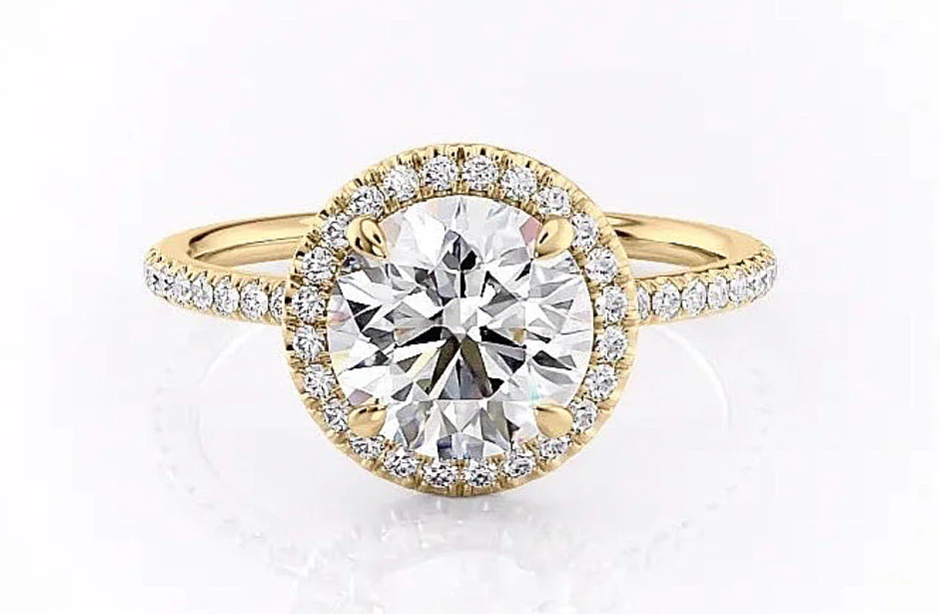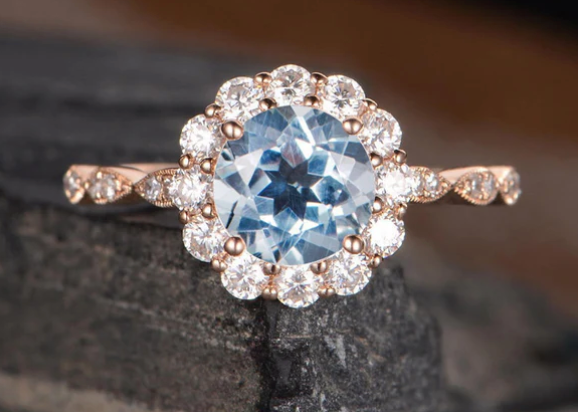
Will my Moissanite engagement ring pass the Diamond test?
...a look into this perfect Diamond alternative.
The likeliness is that you've probably heard about - or even already purchased - moissanite jewlery: an eco-friendly, conflict-free gemstone that rivals diamonds in sparkle yet comes at a fraction of the price. Moissanite is pretty much THE top choice for those looking for a budget-friendly alternative engagement ring at the moment.
But the big question is, can moissanite successfully mimic a diamond and even trick a diamond tester? Well today, we're going to find out the answer to just that.
First: a quick background on Moissanite
Moissanite, naturally occurring but extremely rare, was first discovered by scientist Henri Moissan in a meteor crater. Thanks to advanced technology, this brilliant gem can now be synthesized in laboratories, offering a beautifully crafted, socially responsible option for gemstone lovers.
Moissanite is almost as hard as diamonds, with a hardness rating of 9.25-9.5, just under the diamond's 10. This makes moissanite not only durable but also a compelling substitute for diamonds in engagement rings. Its resemblance to diamonds is uncanny (evidence just below!), making it tough for even your closest friends to spot the difference without a few tips on what to look for.

Round Cut Moissanite Engagement Ring With Halo (click for US site)
Round Cut Moissanite Engagement Ring With Halo (click for UK site)
Round Cut Moissanite With Side Stones (click for US site)
Round Cut Moissanite With Side Stones (click for UK site)
Telling Moissanite apart from Diamond
When viewed side by side, distinguishing a high-quality moissanite from a diamond with the naked eye is nearly impossible. Though subtly different, moissanite exhibits a greater brilliance than diamonds due to its higher refractive index and double refraction quality.
This means more light is dispersed, giving moissanite its characteristic colorful sparkles. While these differences can be subtle in smaller stones, they become more pronounced in larger moissanite stones, making them more detectable to those who know their gemstones.
...and when it comes to testing?
Trained professionals can usually identify moissanite by its distinct fire. However, identifying it requires specific gemological tools. Diamond testers, originally designed to distinguish diamonds from cubic zirconia based on thermal conductivity, may not effectively differentiate between moissanite and diamond since moissanite also conducts heat well.
Basic diamond testers, which measure thermal conductivity, might not capture the slight differences between these two gemstones. Although they are useful tools for gemologists, they are not infallible.
Round Cut Moissanite Pavé Set Shoulders With Hidden Halo (click for US site)
Round Cut Moissanite Pavé Set Shoulders With Hidden Halo (click for UK site)

Round Cut Moissanite Ring With Hidden Halo (click for US site)
Round Cut Moissanite Ring With Hidden Halo (click for UK site)
Conclusion: The results are in!
So in conclusion, yes, moissanite can often pass as a diamond in casual settings and even trick a standard diamond tester. While some may see it as an excellent diamond substitute, Moissanite's unique characteristics and beauty make it deserving of appreciation on its own merits.
If you're enchanted by moissanite, or considering it as a diamond alternative, Flawless Moissanite is here to guide you through choosing the perfect gemstone for your dream ring! We've quite the selection on offer - which you can flick through on our Moissanite engagement rings page.

